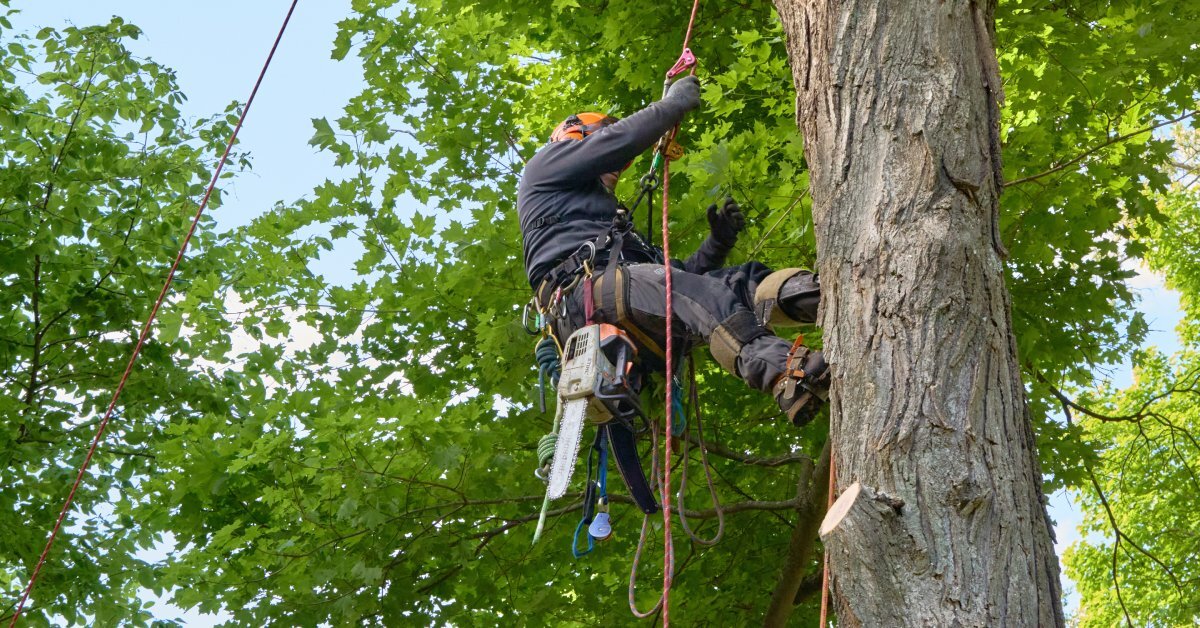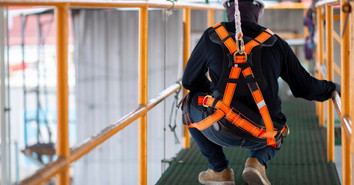Choosing the right safety harness is about protecting yourself while getting the job done efficiently. The harness2 you select should match the specific demands of your work environment, the tasks you perform, and the hazards you face.
Different jobs require different harnesses. A construction worker suspended from scaffolding needs something entirely different from an arborist navigating tree canopies or a tower technician scaling communication structures. Knowing these core distinctions will help you make informed decisions that keep you safe and productive.
This breakdown helps you discover which type of safety harness is right for your job, including key details about each type and where to go to get yours.
What Makes a Safety Harness Suitable for Specific Jobs?
Safety harnesses vary in design, attachment points, and support features. The right harness depends on several factors: the nature of your work, the duration you’ll spend suspended, the type of fall protection system you’re using, and the mobility your job requires.
Full-body harnesses are the industry standard for fall protection because they distribute forces across the body during a fall. However, within this category, you’ll find variations tailored to different work scenarios.
What Type of Harness Do Construction Workers Need?
Construction sites present diverse fall hazards, from scaffolding to steel beams. Workers in this environment typically need harnesses with dorsal D-rings for fall arrest systems. These attachment points sit between the shoulder blades and connect to lifelines or self-retracting lanyards.
Look for harnesses with the following features:
- Quick-connect buckles for easy donning and doffing
- Padded shoulder and leg straps for all-day comfort
- Tool loops and accessory rings for equipment
- High-visibility colors for improved job site safety
- Durable webbing that withstands rough surfaces
Construction harnesses should balance protection with practicality. You’ll likely wear yours for extended periods, so prioritize comfort without compromising safety standards.

What Harness Works Best for Telecommunications?
Tower technicians face unique challenges. They spend long periods at height, often in awkward positions while performing detailed work. These professionals need harnesses designed for positioning and extended suspension.
Tower climbing harnesses feature sternal D-rings in addition to dorsal attachment points. This front-mounted ring allows workers to position themselves comfortably while keeping both hands free for tasks. Some models include hip D-rings for additional positioning options.
Consider the following functions:
- Suspension trauma straps to prevent injury during prolonged suspension
- Multiple adjustment points for a customized fit
- Ventilated padding to manage heat in enclosed tower structures
- Tool organization systems for efficient work
The ability to remain stationary and positioned correctly for extended periods makes these harnesses essential for telecommunications work.
What Should Arborists Look for in a Climbing Harness?
Arborists require exceptional mobility and flexibility. Tree work demands constant movement, repositioning, and the ability to work at various angles. Tree climbing saddles offer the specialized support and freedom of movement that arborists need.
These harnesses typically include features, such as:
- Bridge systems that allow smooth lateral movement around the tree
- Hip D-rings for work positioning
- Contoured leg loops that don’t restrict movement during climbing
- Gear loops and attachment points for saws, pruners, and other tools
- Lightweight construction that doesn’t fatigue the user
Arborists often spend entire days in their harnesses, making comfort and mobility nonnegotiable. The harness becomes an extension of the climber, supporting dynamic movement while maintaining security.

What Harness Do Utility Workers Require?
Electrical utility workers and linemen need harnesses that accommodate climbing and positioning work. These professionals often work on poles, in bucket trucks, or on transmission towers.
Utility harnesses combine features from several categories:
- Dorsal D-rings for fall arrest
- Side D-rings for positioning on poles
- Flame-resistant materials to protect against electrical hazards
- Dielectric hardware that won’t conduct electricity
- Quick-adjust sizing to accommodate seasonal clothing changes
The electrical environment adds complexity to harness selection. Materials and hardware must meet strict electrical safety standards while providing reliable fall protection.
What Type of Harness Suits Wind Turbine Technicians?
Wind turbine technicians work in challenging conditions at extreme heights. Their harnesses must perform reliably in wind, rain, and temperature extremes while supporting climbing and maintenance tasks.
These harnesses often include functions, such as:
- Multiple D-ring configurations for versatile attachment options
- Corrosion-resistant hardware for marine and coastal environments
- Generous padding for comfort during long climbs
- Integrated rescue capabilities
- Reflective elements for visibility in low-light conditions
Wind energy work combines elements of tower climbing, construction, and utility work, requiring harnesses that adapt to varied tasks throughout a single shift.
What Features Do Rescue Harnesses Need?
Rescue personnel require harnesses that support the rescuer and potentially another person during emergency operations. These specialized harnesses differ significantly from standard fall protection equipment.
Essential rescue harness features include:
- Weight capacity exceeding standard ratings to support two people
- Multiple attachment points for complex rigging setups
- Quick-release mechanisms for rapid deployment
- Reinforced stitching and heavy-duty materials
- Compatibility with rescue-specific hardware and systems
Rescue harnesses prioritize load distribution and versatility over lightweight construction. The ability to perform under extreme conditions makes them distinct from other harness categories.
How Do You Ensure Proper Fit and Function?
Selecting the right harness type represents only the first step. Proper fit dramatically affects safety and comfort. A poorly fitted harness will fail to distribute forces correctly during a fall or cause discomfort that leads to improper use.
Take time to adjust all straps and buckles according to manufacturer instructions. The harness should fit snugly without restricting movement or circulation. Check that D-rings sit in their intended positions and that leg loops support your weight comfortably.
Regular inspection catches wear, damage, or deterioration before they compromise safety. Establish a routine inspection schedule and retire harnesses that show signs of damage, regardless of their age.
Find Your Perfect Match With Monarch Rope
The right safety harness matches your specific job environment and daily demands. Construction workers need different features than arborists. Tower technicians have distinct requirements from rescue personnel. Learning these core differences helps you select equipment that keeps you safe while supporting efficient work.
Don’t compromise on harness selection. The few extra minutes spent researching options and ensuring proper fit could prevent serious injury. Consult with safety professionals, review manufacturer specifications, and consider trying different models before committing to a purchase.
Your harness is your primary defense against fall hazards. Choose wisely, inspect regularly, and always use your equipment as intended. Partner with the trusted professionals at Monarch Rope to ensure your harness or saddle serve you well on the job; your life depends on it.

